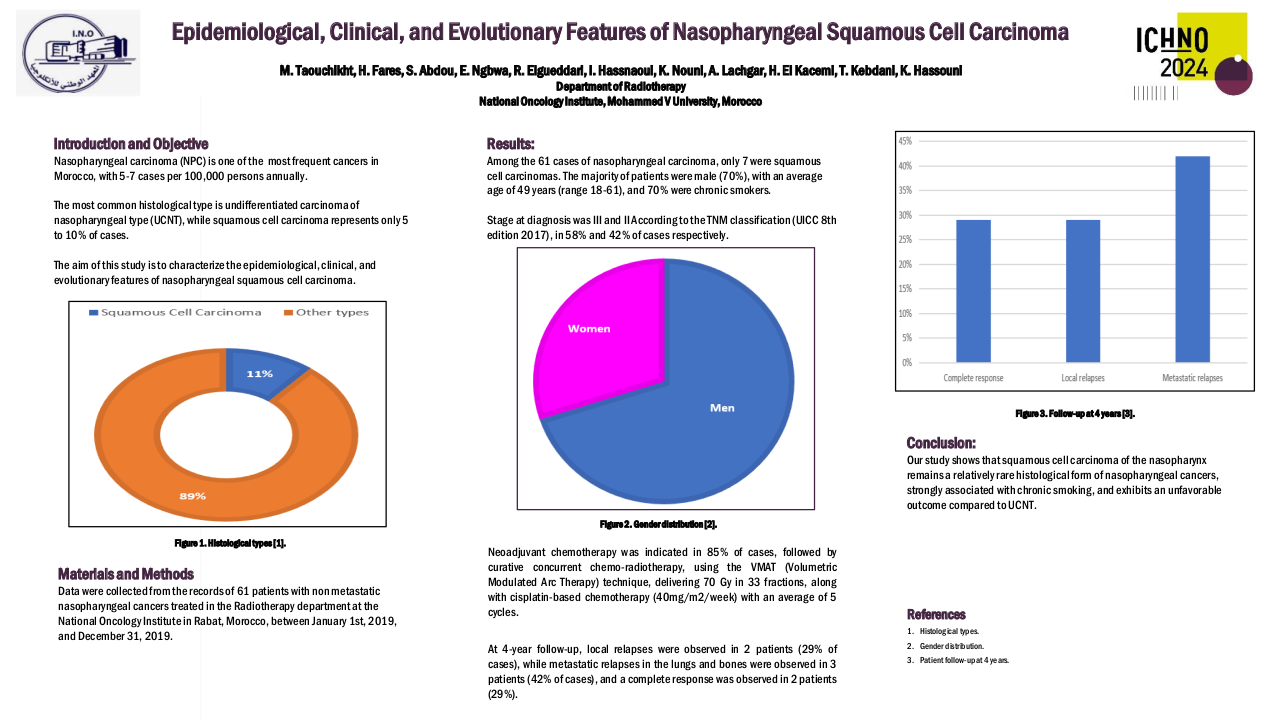epidemiological, clinical, and evolutionary features of nasopharyngeal squamous cell carcinoma
Purpose/Objective
Nasopharyngeal carcinoma (NPC) is one of the most frequent cancers in Morocco, with 5-7 cases per 100,000 persons annually.
The most common histological type is undifferentiated carcinoma of nasopharyngeal type (UCNT), while squamous cell carcinoma represents only 5 to 10% of cases.
The aim of this study is to characterize the epidemiological, clinical, and evolutionary features of nasopharyngeal squamous cell carcinoma.
Material/Methods
Data were collected from the records of 61 patients with non metastatic nasopharyngeal cancers treated in the Radiotherapy department at the National Oncology Institute in Rabat, Morocco, between January 1st, 2019, and December 31, 2019.
Results
Among the 61 cases of nasopharyngeal carcinoma, only 7 were squamous cell carcinomas. The majority of patients were male (70%), with an average age of 49 years (range 18-61), and 70% were chronic smokers.
Stage at diagnosis was III and II According to the TNM classification (UICC 8th edition 2017), in 58% and 42% of cases respectively.
Neoadjuvant chemotherapy was indicated in 85% of cases, followed by curative concurrent chemo-radiotherapy, using the VMAT (Volumetric Modulated Arc Therapy) technique, delivering 70 Gy in 33 fractions, along with cisplatin-based chemotherapy (40mg/m2/week) with an average of 5 cycles.
At 4-year follow-up, local relapses were observed in 2 patients (28% of cases), while metastatic relapses in the lungs and bones were observed in 3 patients (42% of cases), and a complete response was observed in 2 patients (28%).
Conclusion
Our study shows that squamous cell carcinoma of the nasopharynx remains a relatively rare histological form of nasopharyngeal cancers, strongly associated with chronic smoking, and exhibits an unfavorable outcome compared to UCNT.



